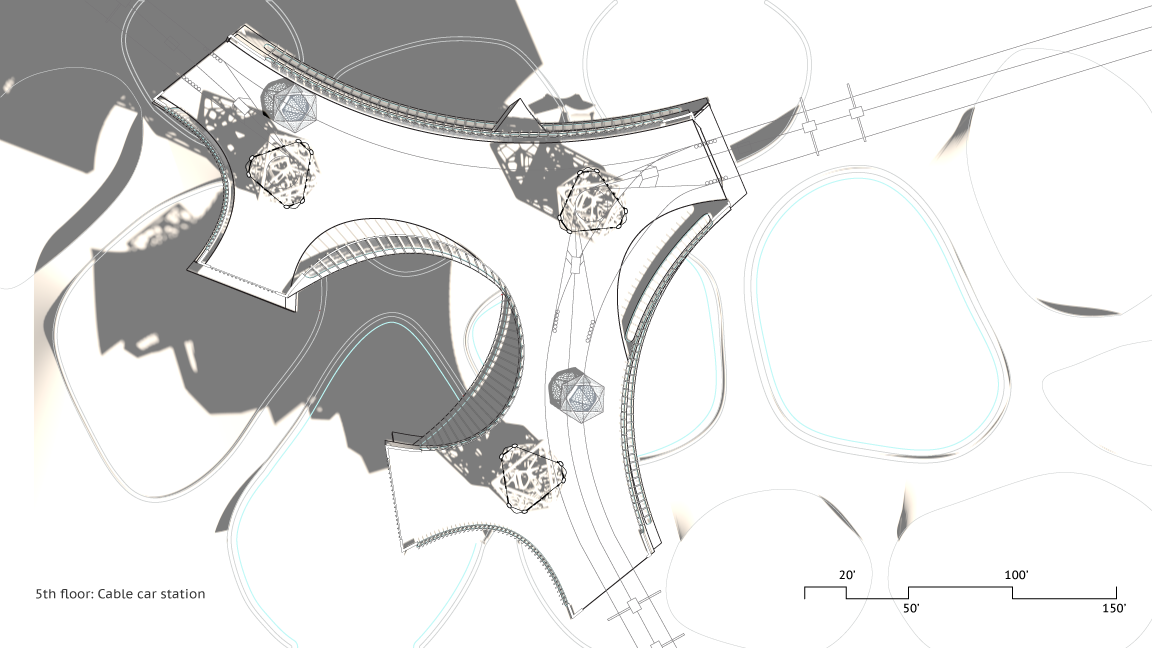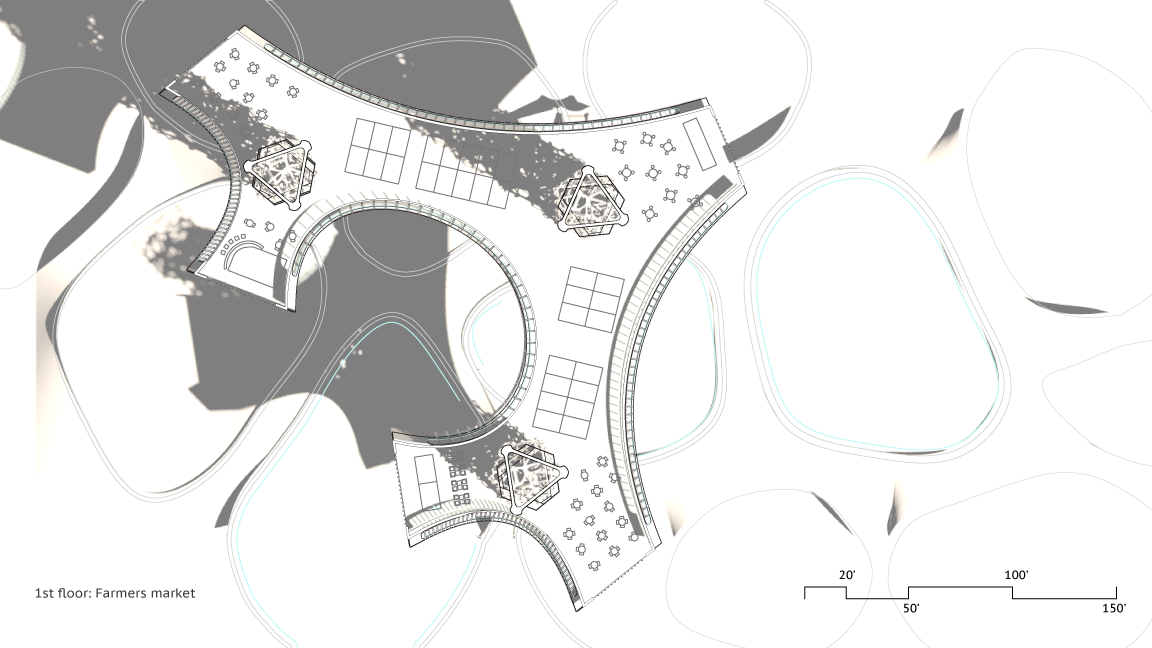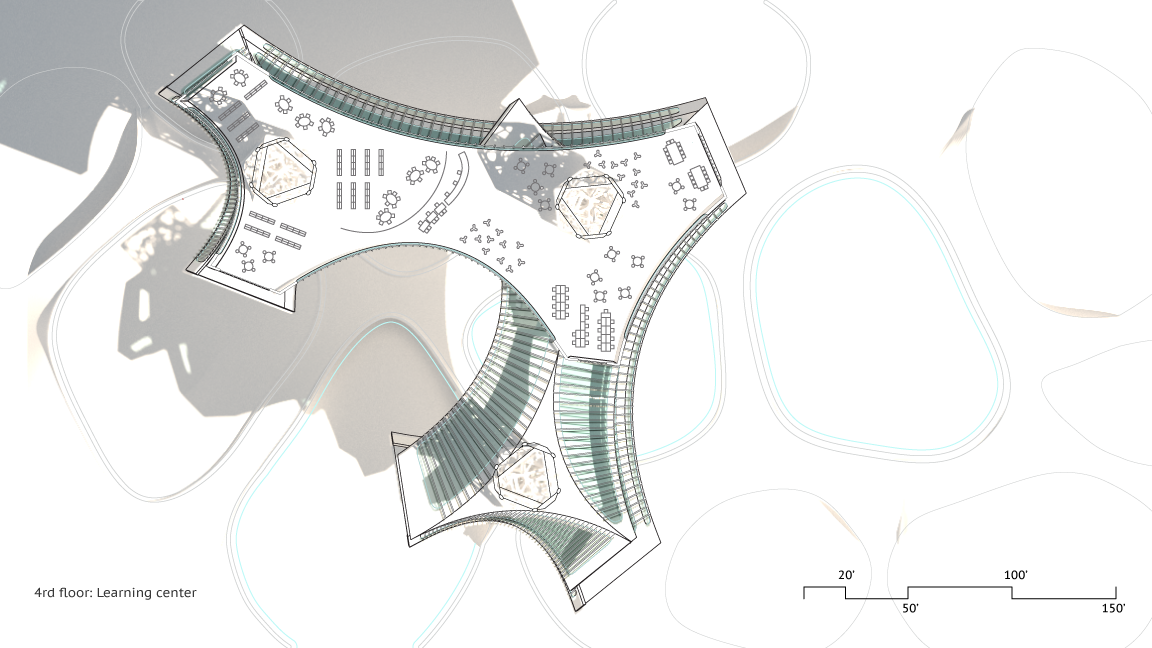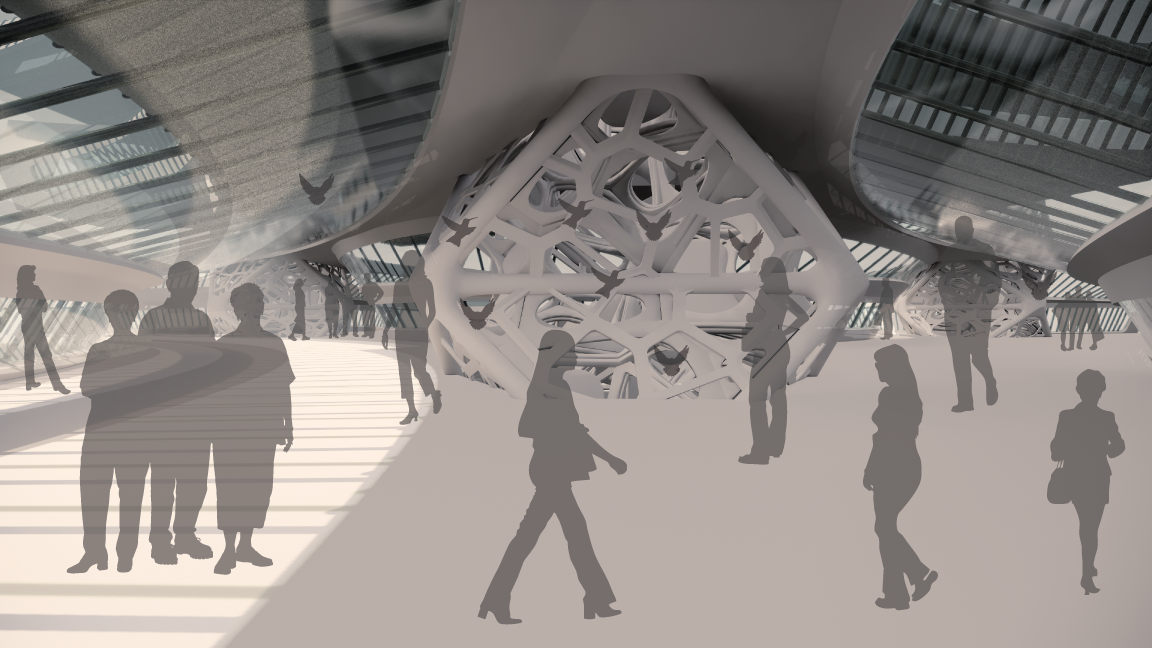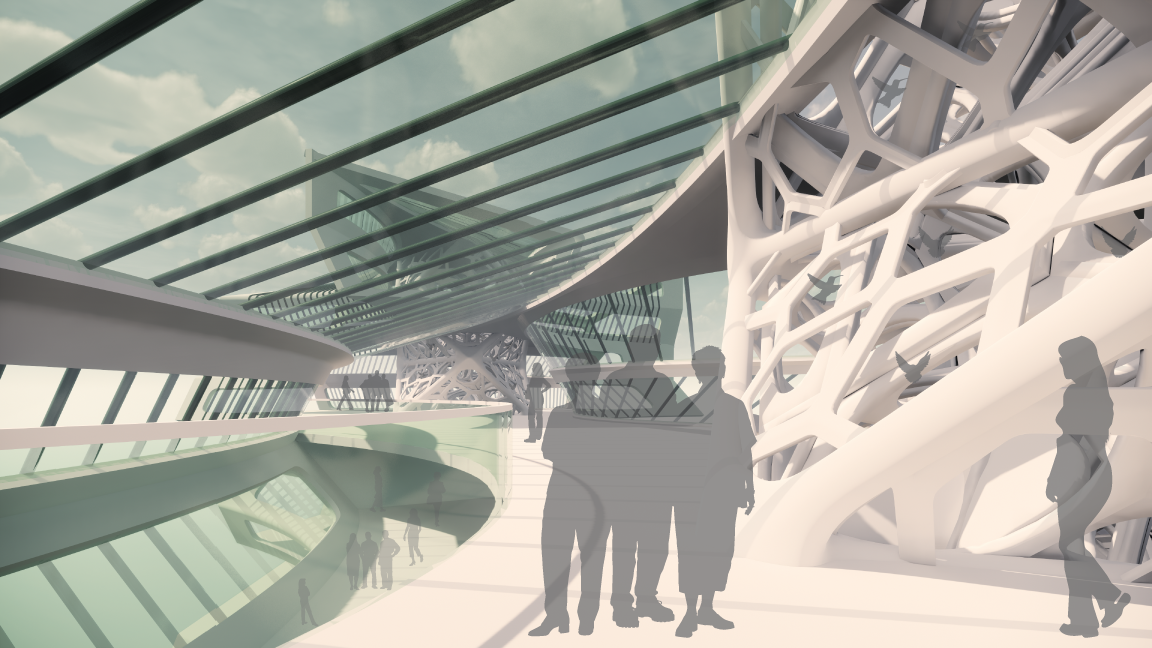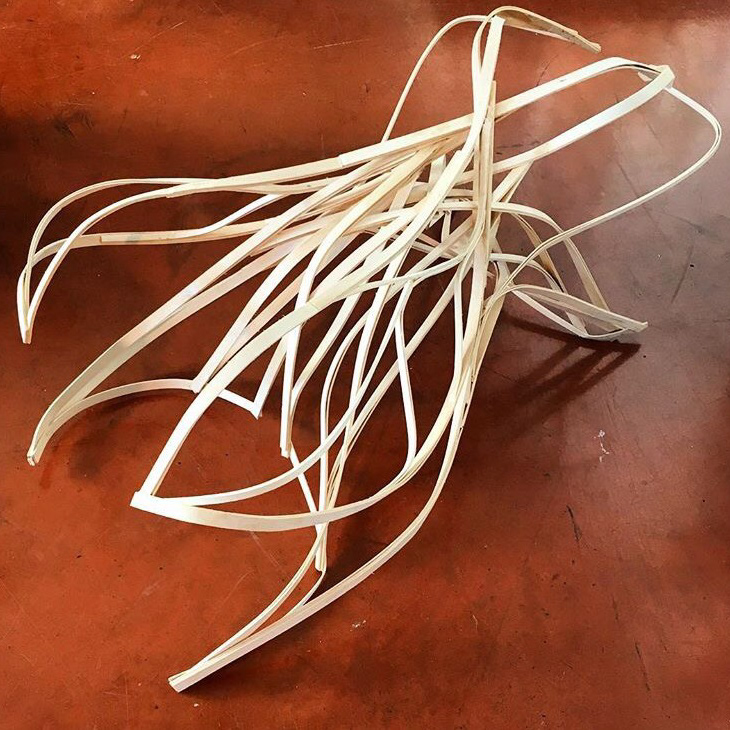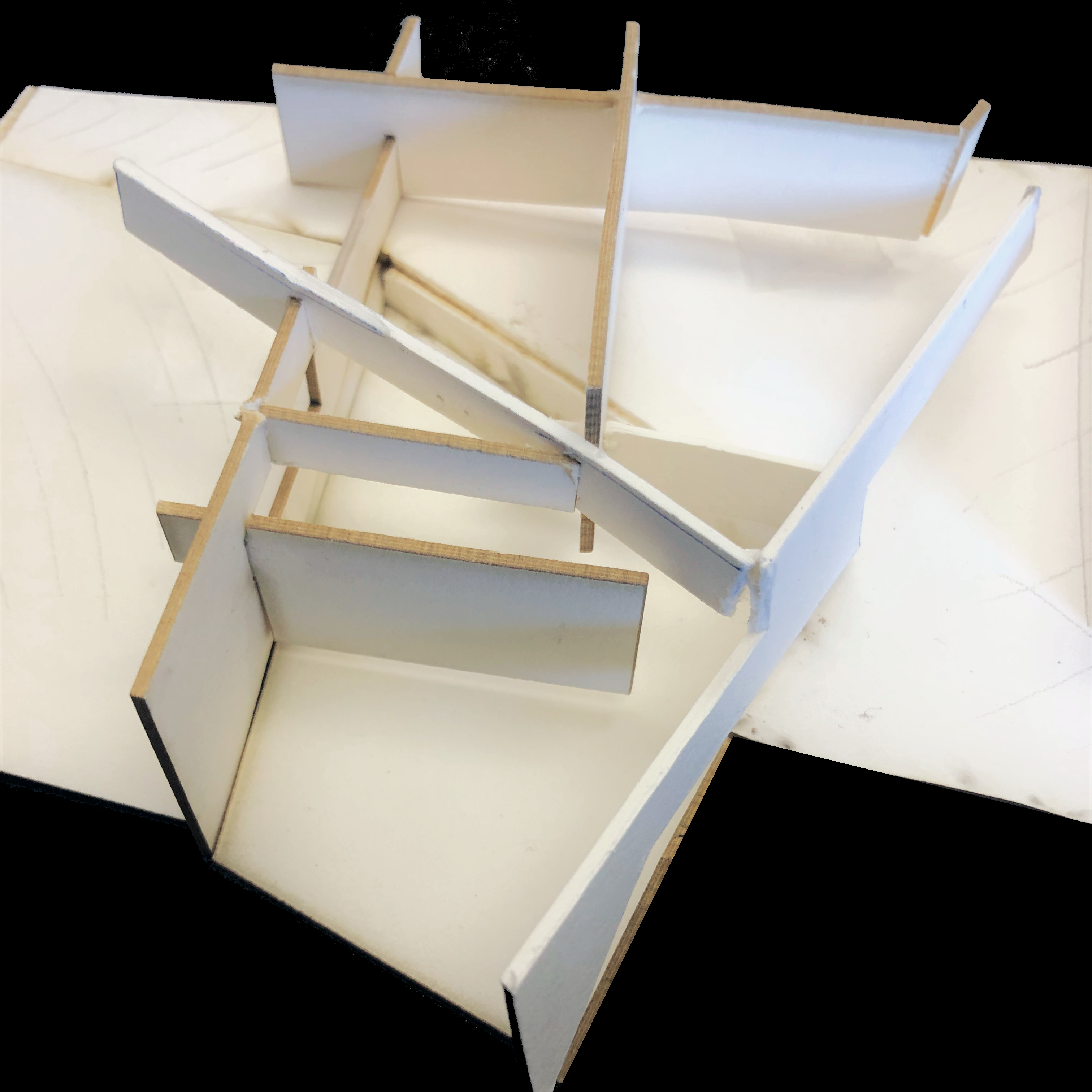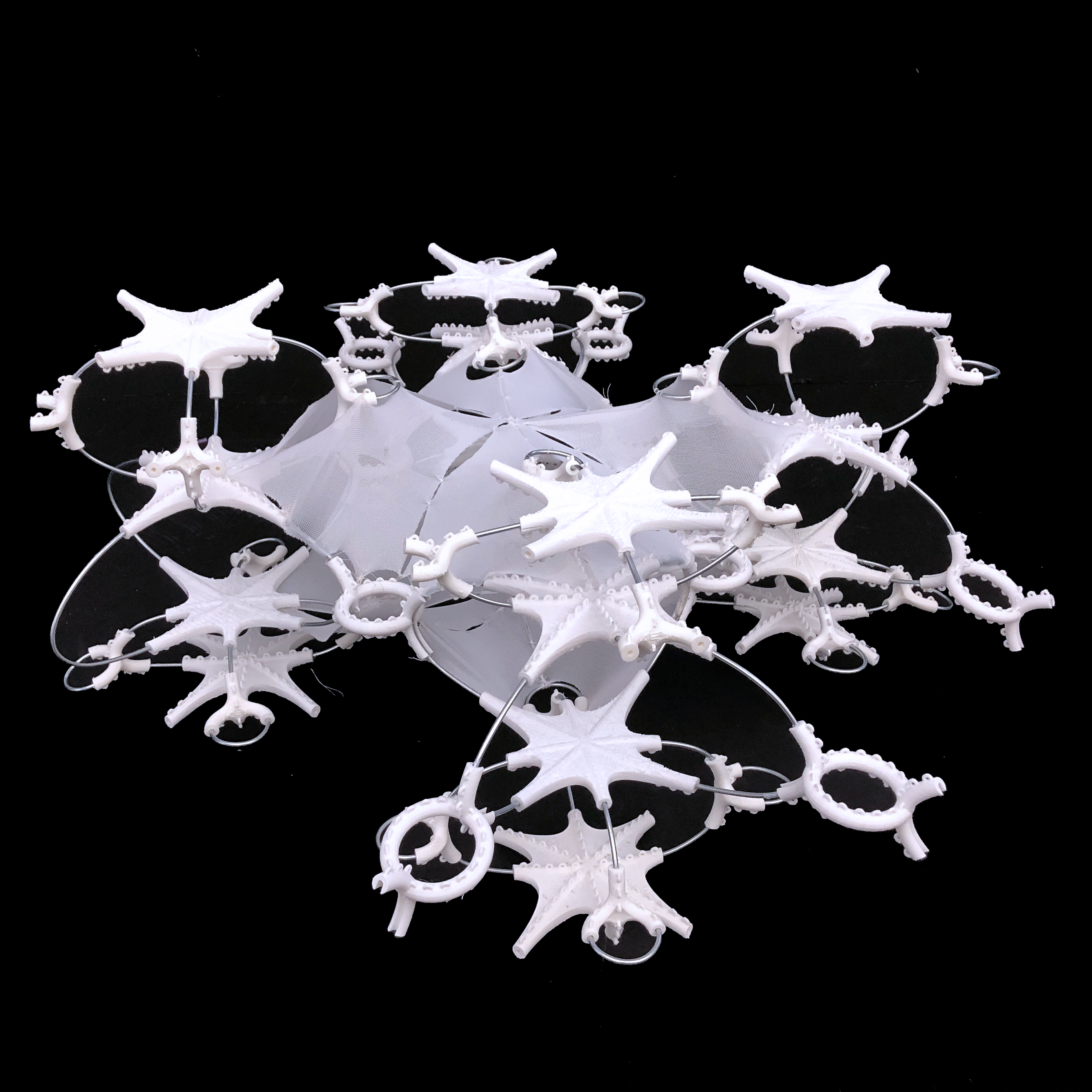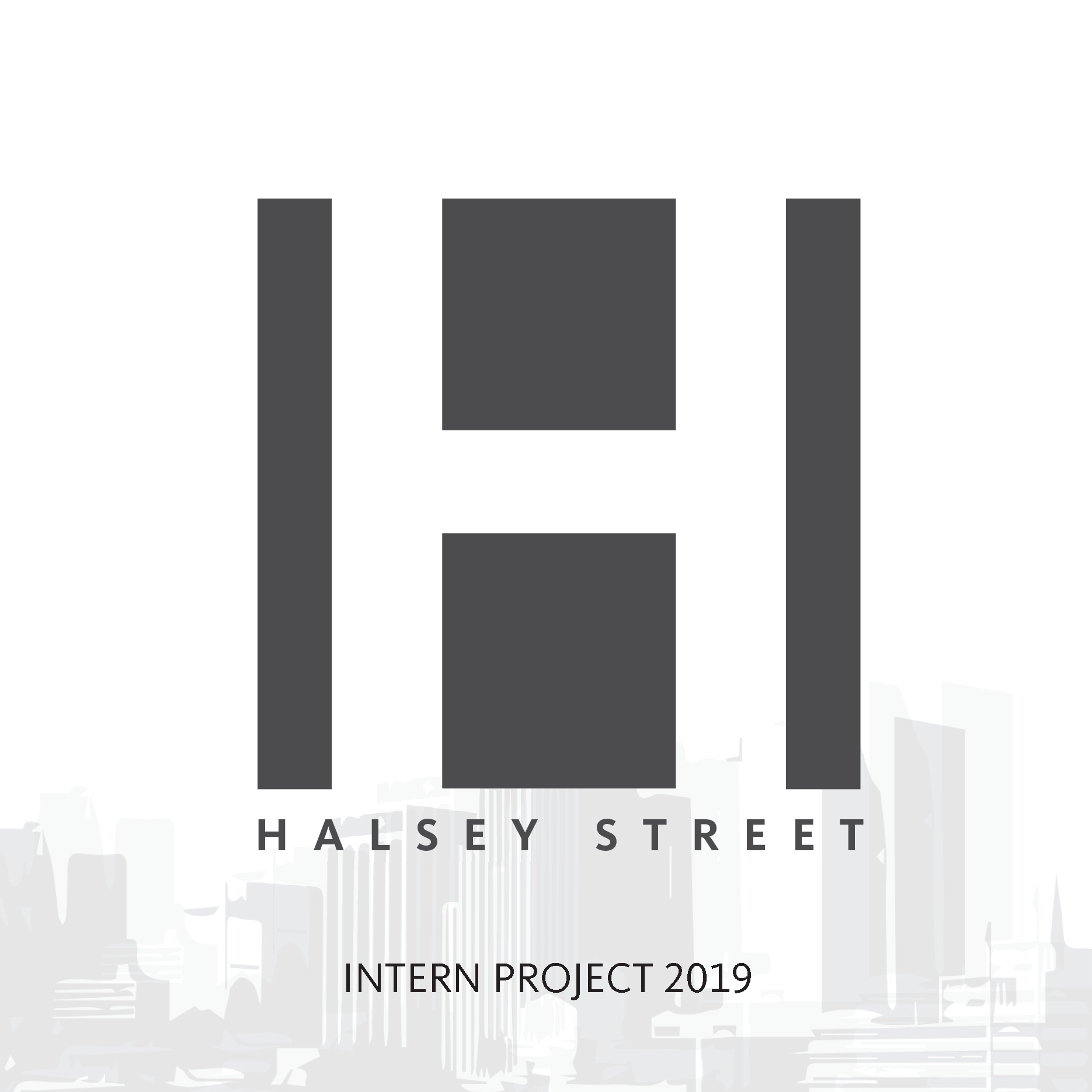The 'Big Picture'
SOFTWARE USED IN THIS PROJECT:
Rhino, Grasshopper, Enscape, V-ray, Illustrator, Photoshop, Indesign
Prof. Gonzalo Carbajo and Prof. Eva Perez de Vega.
In collaboration with Anabel Baquerizo
In collaboration with Anabel Baquerizo
Industrial, urban and population growth have created megacities where there is a crisis of natural elements such as air and water, both of which are essential for not only humans but for the survival of all living beings.
In a future where it is suffocating to breathe and potable water is extremely limited, we propose an urban network of hubs that clean air and harvest rainwater. Multiple forms of transit connect the hubs throughout our site, which is located in the borough of Xochimilco in Mexico City. This network allows for the purification of air in different communities, and replenishes their original sources of water. These hubs also incorporate the cultures of their local communities, and create spaces where nonhumns and humans can coexist and interact.
Mexico City is notorious for human-affected geographic conditions that have contributed to its air pollution and water crisis. Urban expansion chokes Mexico City with heat-inducing carbon dioxide and has wiped out nearly every remaining trace of its original lakes, creating a reality where 9 million people don’t have access to water and 20,000 deaths happen on an average each year because of air pollution. These conditions are only predicted to get worse, giving us a future where the essential elements for survival of all life, air and water, are no longer easily accessible.
Our project realizes that moving forward, we must create a symbiotic relationship between what we call the human world and the natural world. We must realize that they are one and the same. We must understand the larger context of the biosphere, and as architects we need to think of interventions with a lasting impact. We must respond to the future of climate change and its consequences.
By 2100, once all the phases of our proposal have been constructed, the people of Xochimilco no longer have to walk for hours to get just 20 liters of water for them to survive on. They no longer have to move around with masks because it’s suffocating to breath without them. We need to understand that architecture is not just the difference between inside and outside. It is not about taking resources, but giving them back. It is about responding to the future of climate change and the reality of the end of fossil fuels. It is about asking the question: how can architecture change to incorporate our need for clean air and water, the two elements of life that we can no longer take for granted?
In a future where it is suffocating to breathe and potable water is extremely limited, we propose an urban network of hubs that clean air and harvest rainwater. Multiple forms of transit connect the hubs throughout our site, which is located in the borough of Xochimilco in Mexico City. This network allows for the purification of air in different communities, and replenishes their original sources of water. These hubs also incorporate the cultures of their local communities, and create spaces where nonhumns and humans can coexist and interact.
Mexico City is notorious for human-affected geographic conditions that have contributed to its air pollution and water crisis. Urban expansion chokes Mexico City with heat-inducing carbon dioxide and has wiped out nearly every remaining trace of its original lakes, creating a reality where 9 million people don’t have access to water and 20,000 deaths happen on an average each year because of air pollution. These conditions are only predicted to get worse, giving us a future where the essential elements for survival of all life, air and water, are no longer easily accessible.
Our project realizes that moving forward, we must create a symbiotic relationship between what we call the human world and the natural world. We must realize that they are one and the same. We must understand the larger context of the biosphere, and as architects we need to think of interventions with a lasting impact. We must respond to the future of climate change and its consequences.
By 2100, once all the phases of our proposal have been constructed, the people of Xochimilco no longer have to walk for hours to get just 20 liters of water for them to survive on. They no longer have to move around with masks because it’s suffocating to breath without them. We need to understand that architecture is not just the difference between inside and outside. It is not about taking resources, but giving them back. It is about responding to the future of climate change and the reality of the end of fossil fuels. It is about asking the question: how can architecture change to incorporate our need for clean air and water, the two elements of life that we can no longer take for granted?
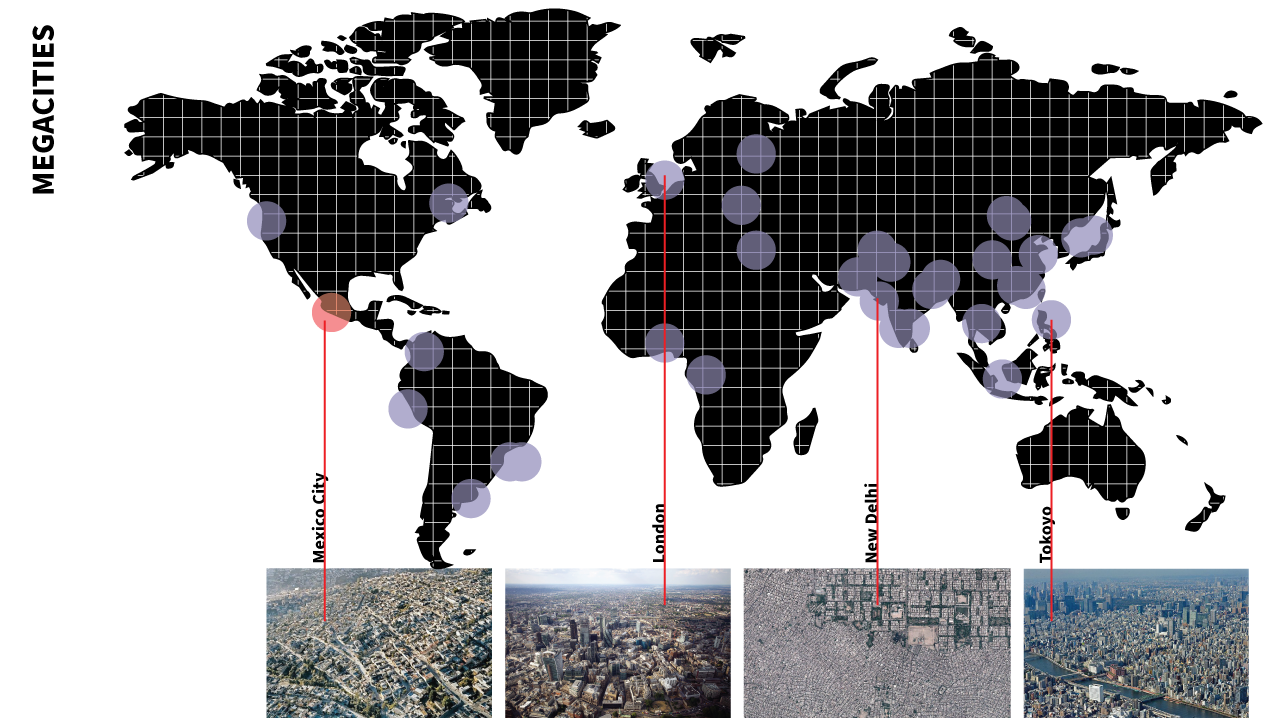
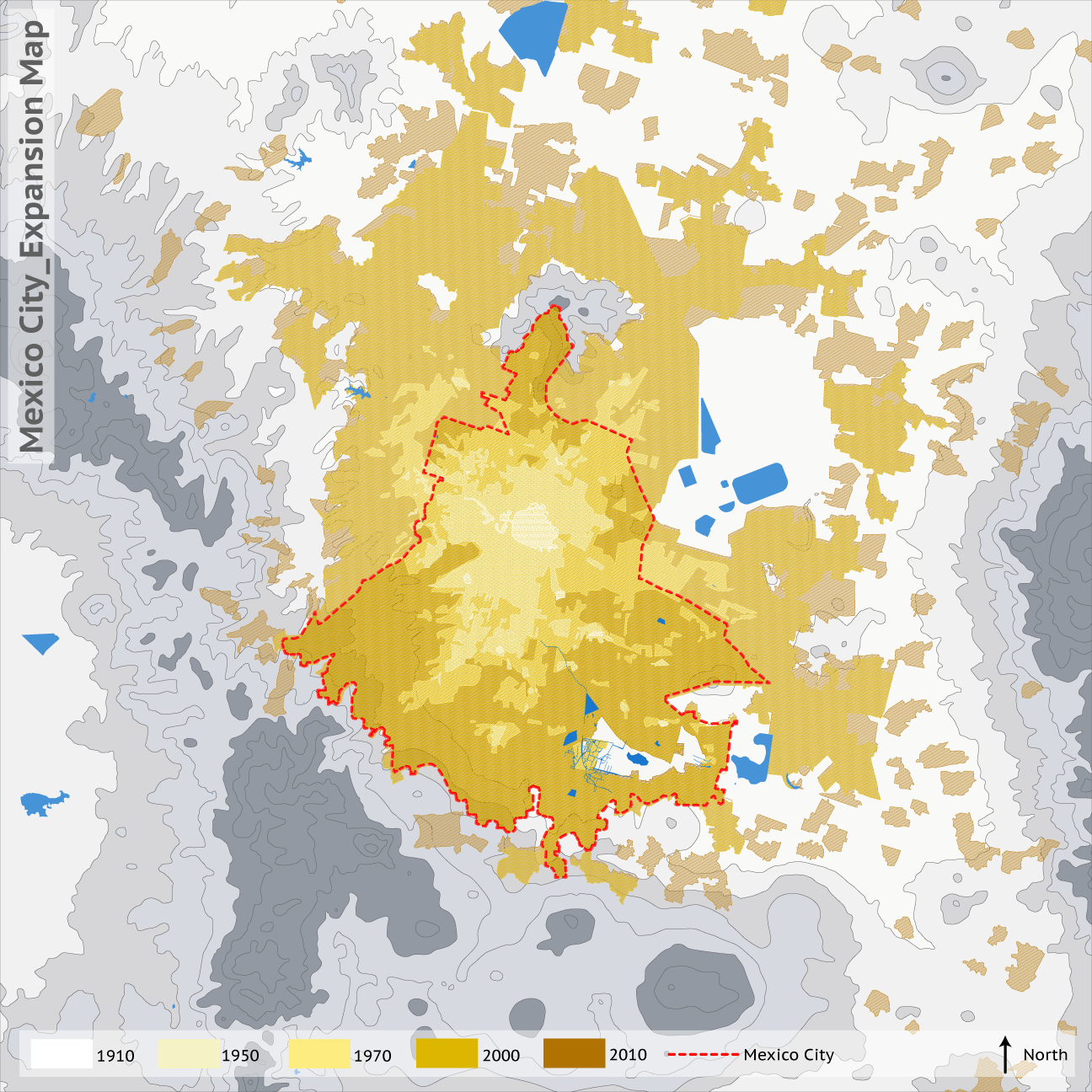
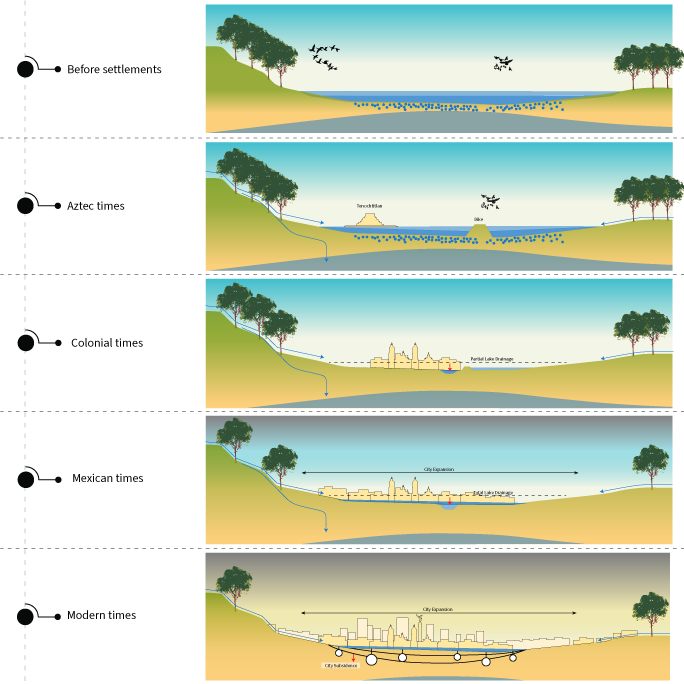

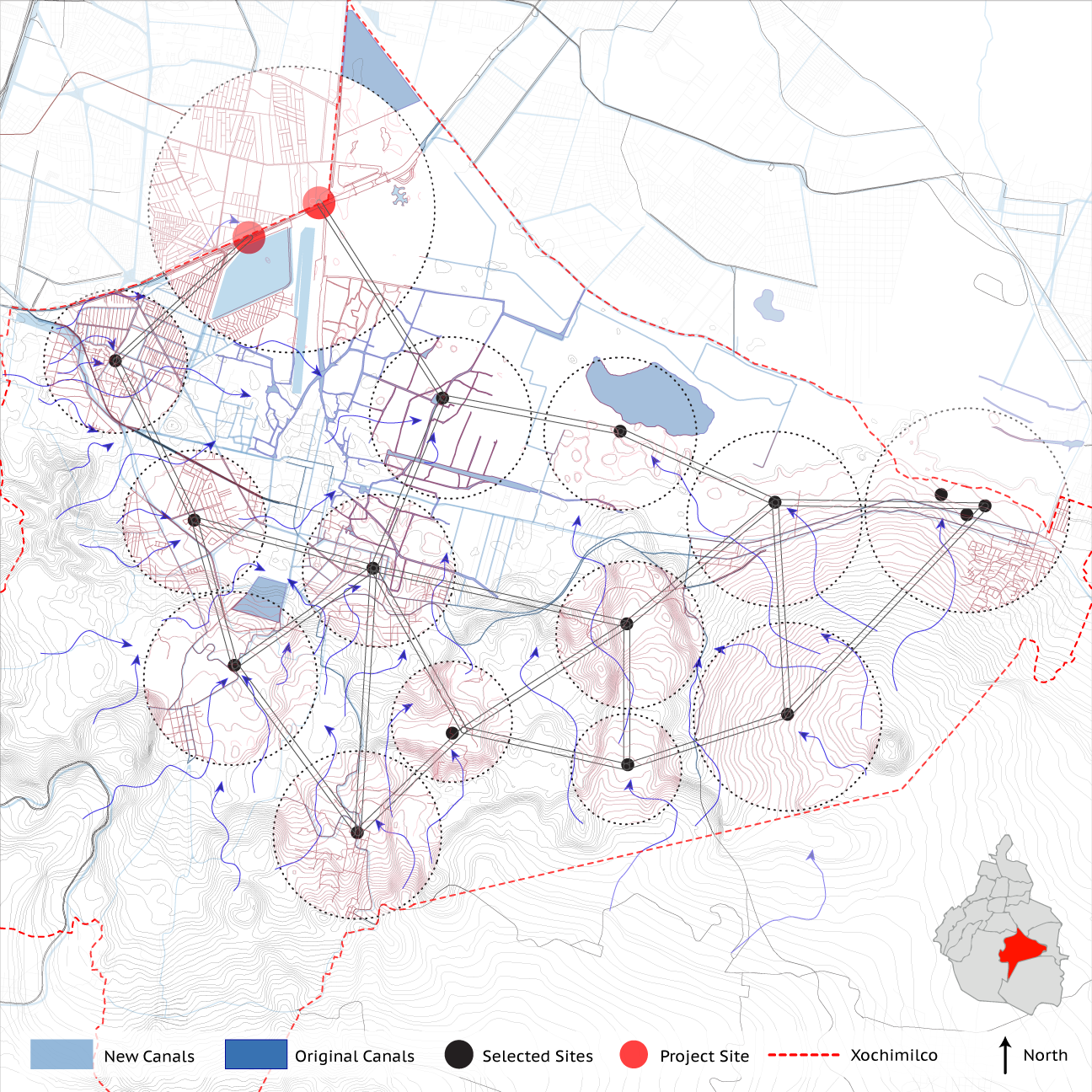
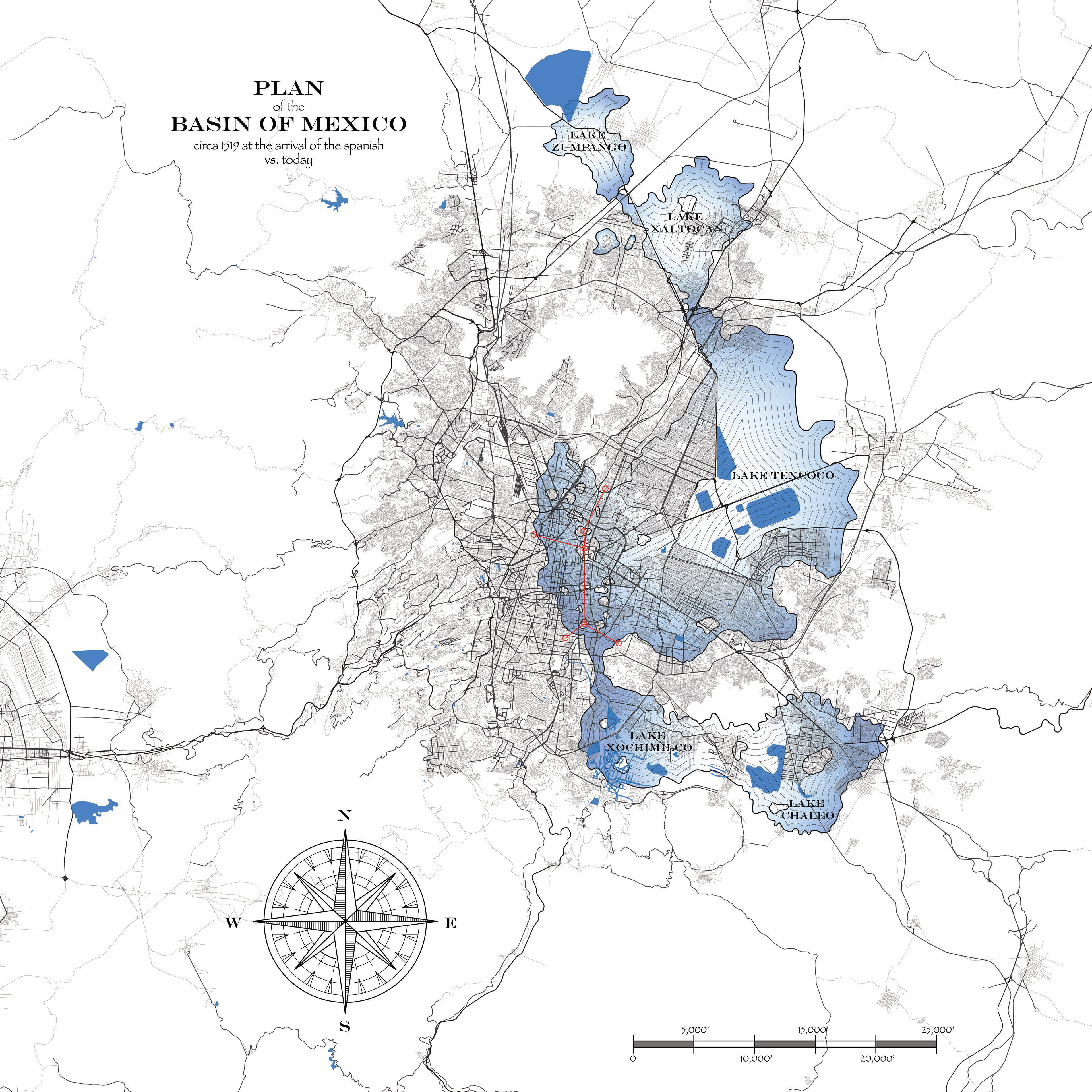
SITE: Xochimilco, Mexico City, Mexico
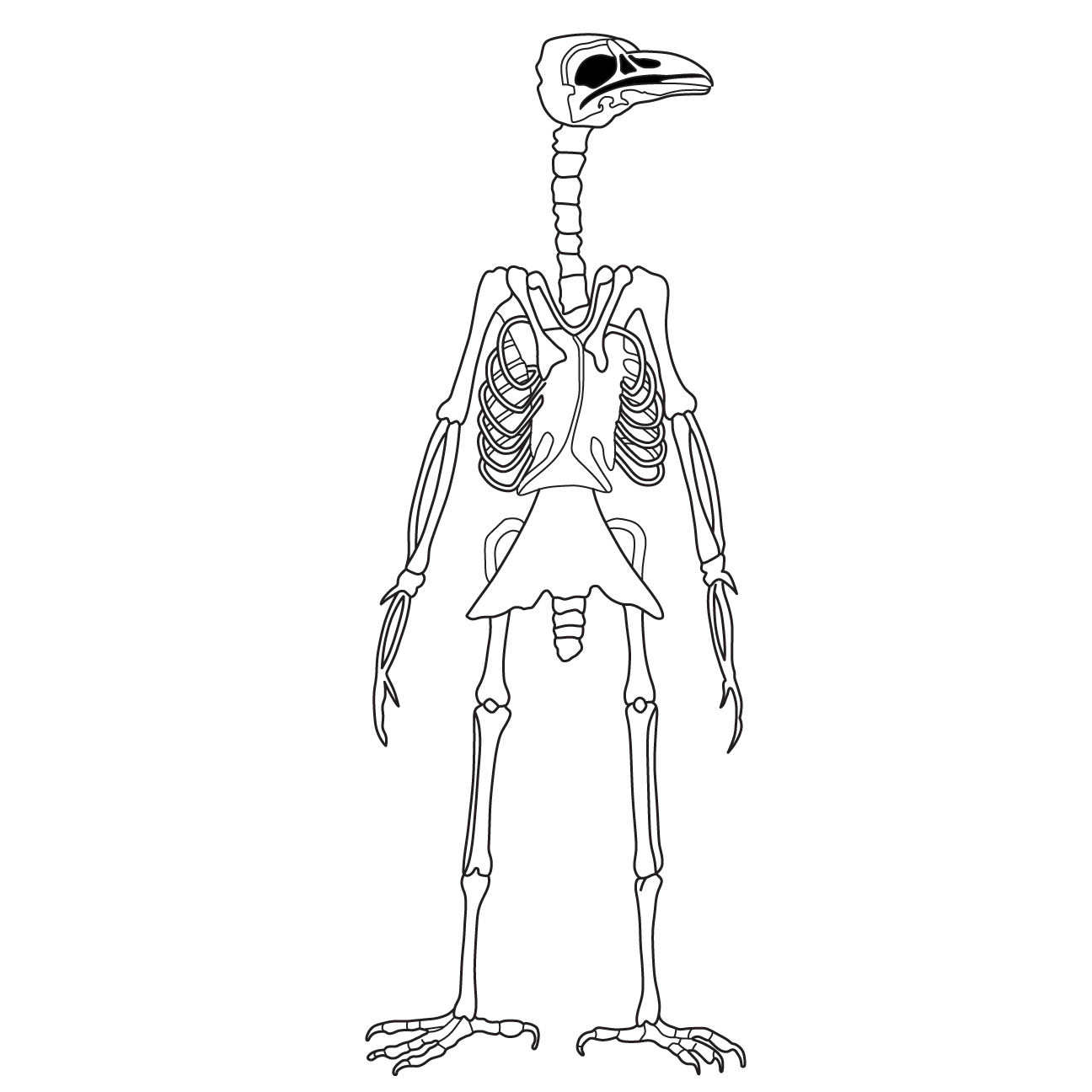
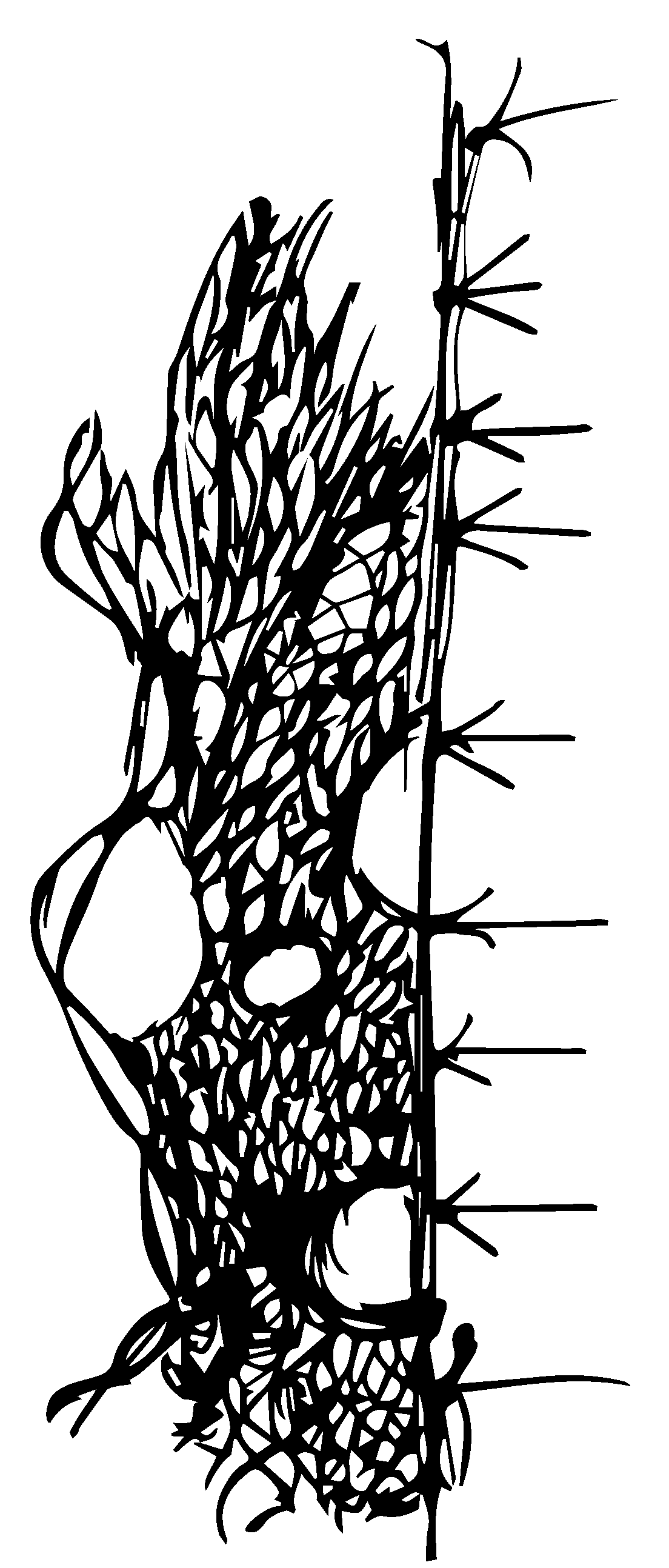
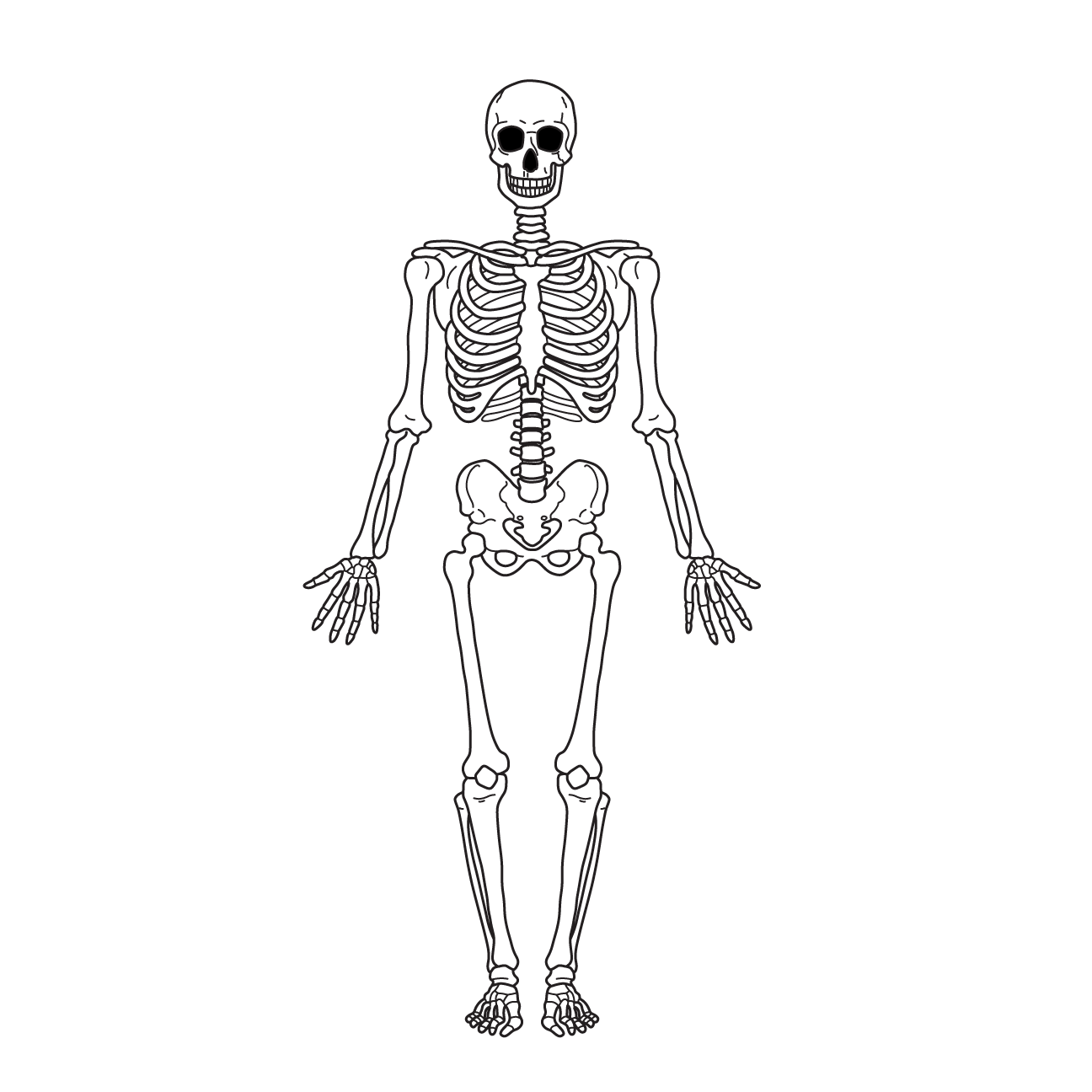
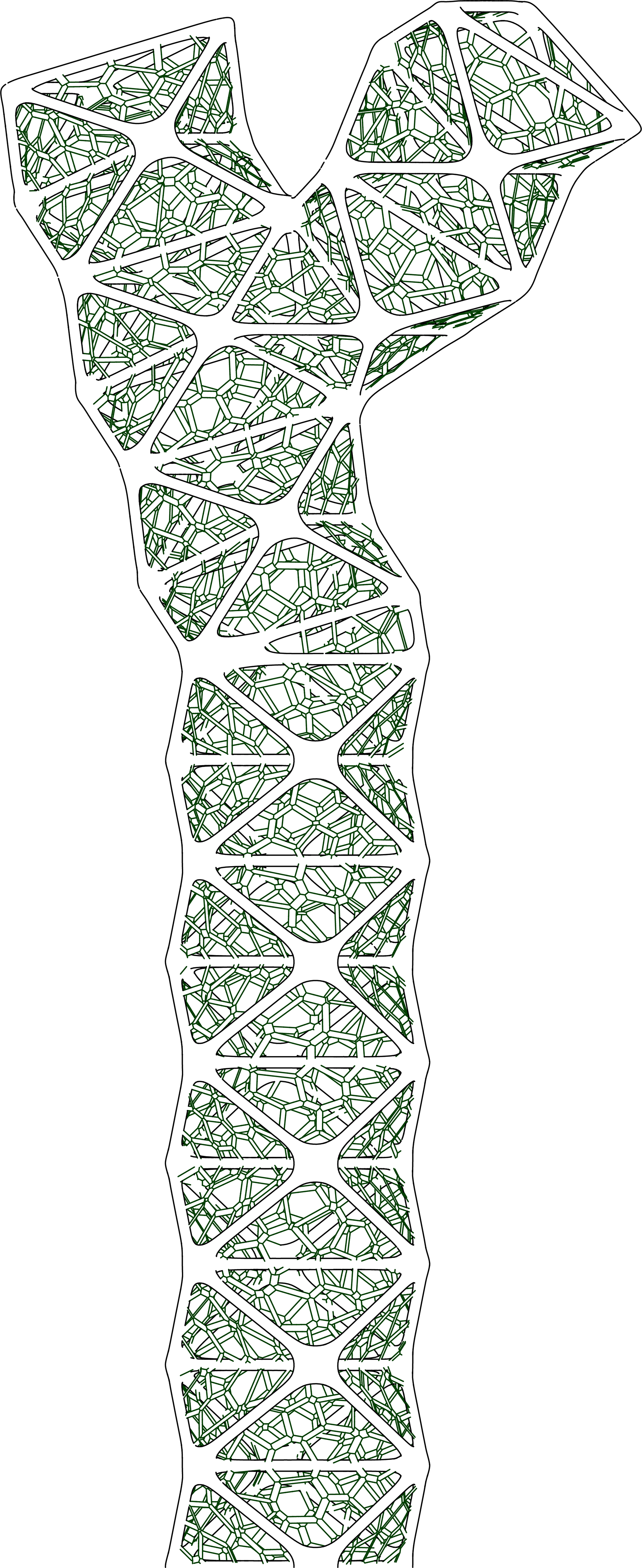
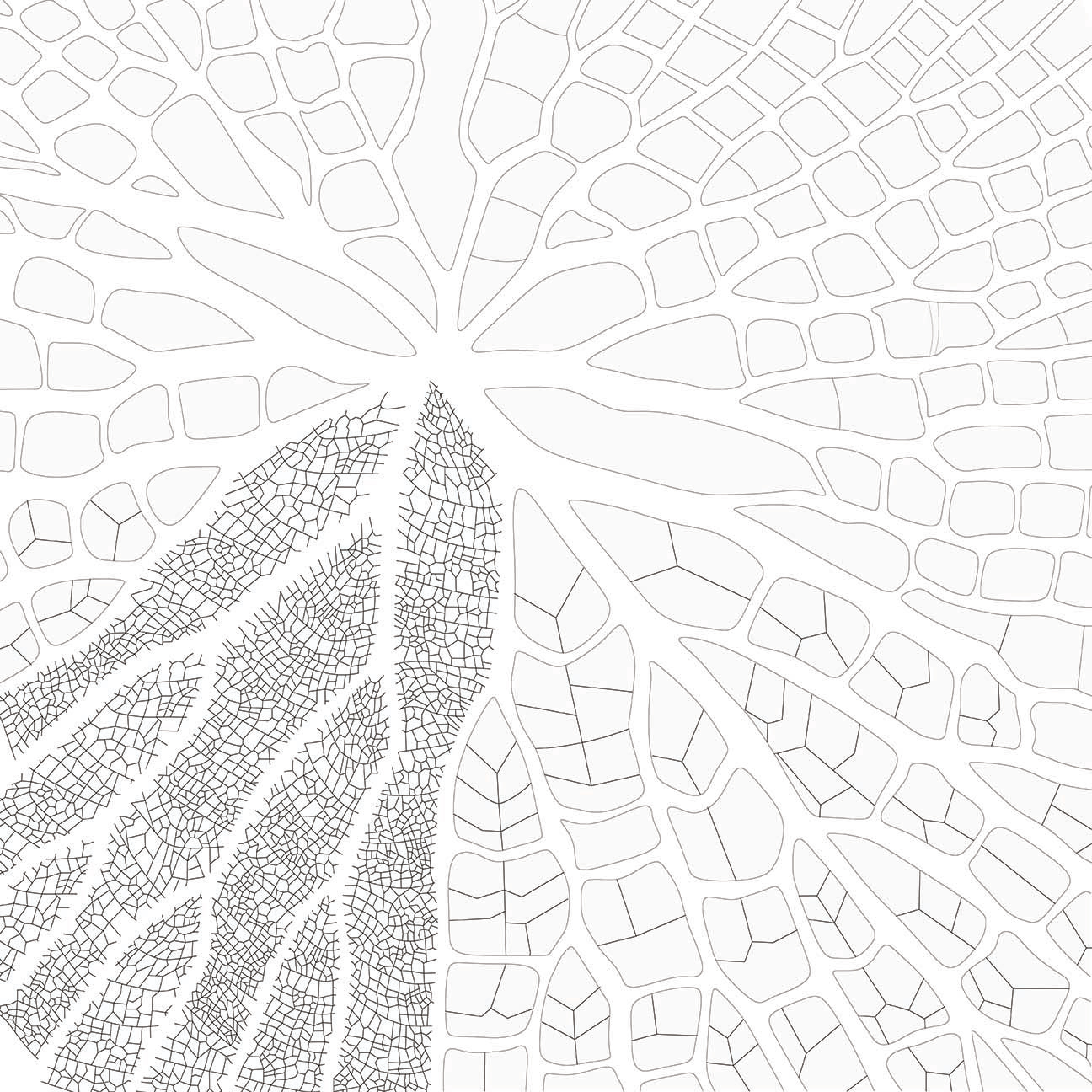
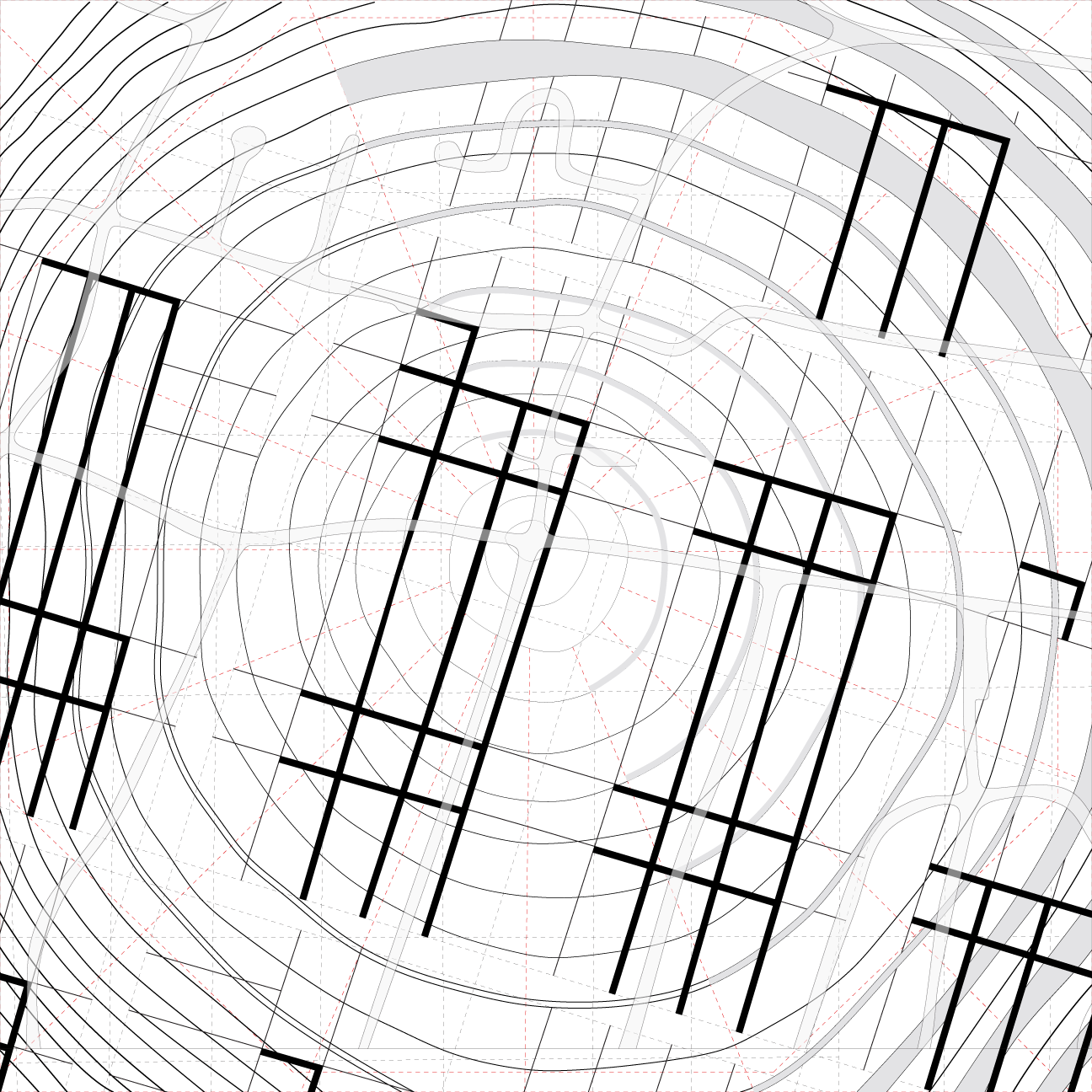

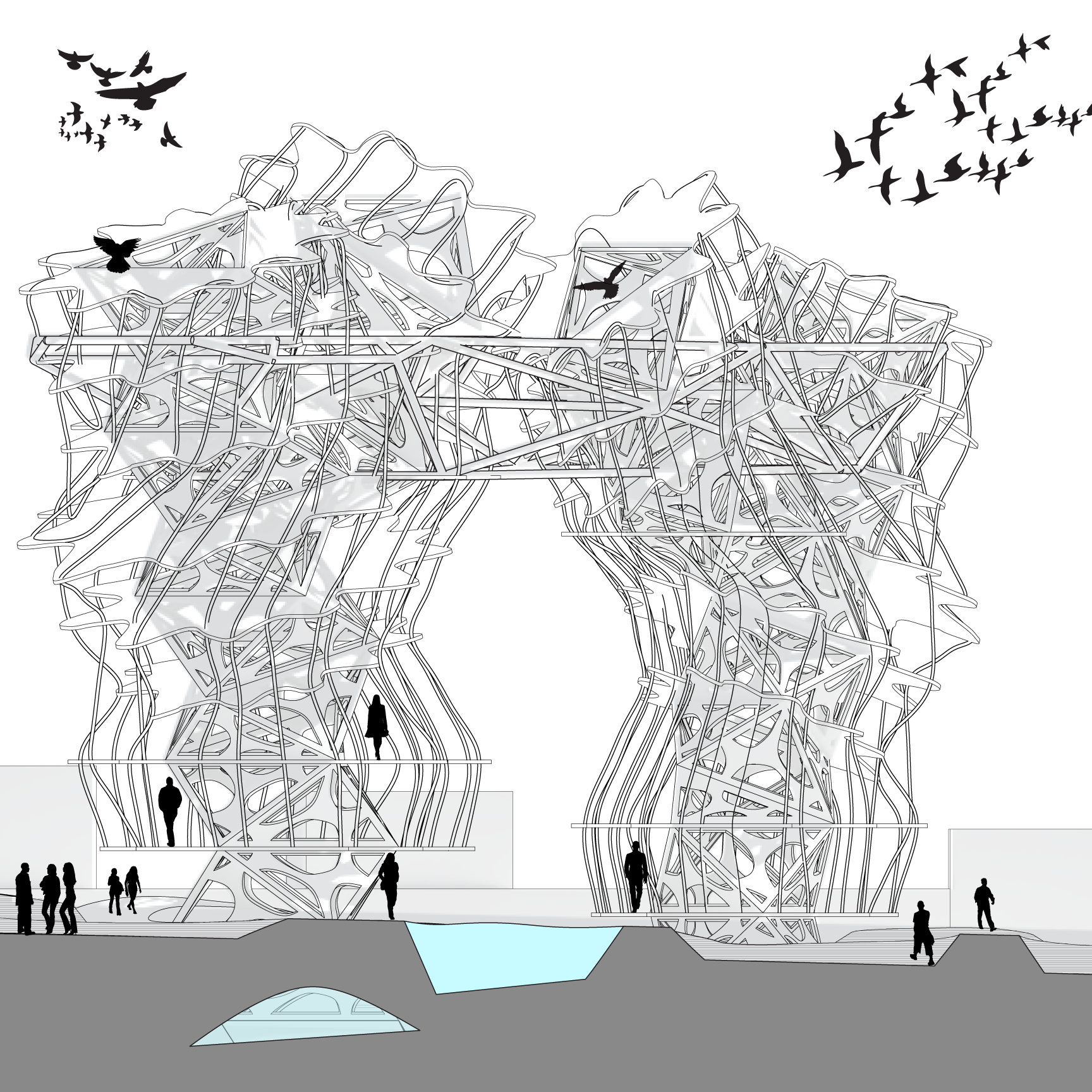
SYMBIOSIS: Humans and Non-humans
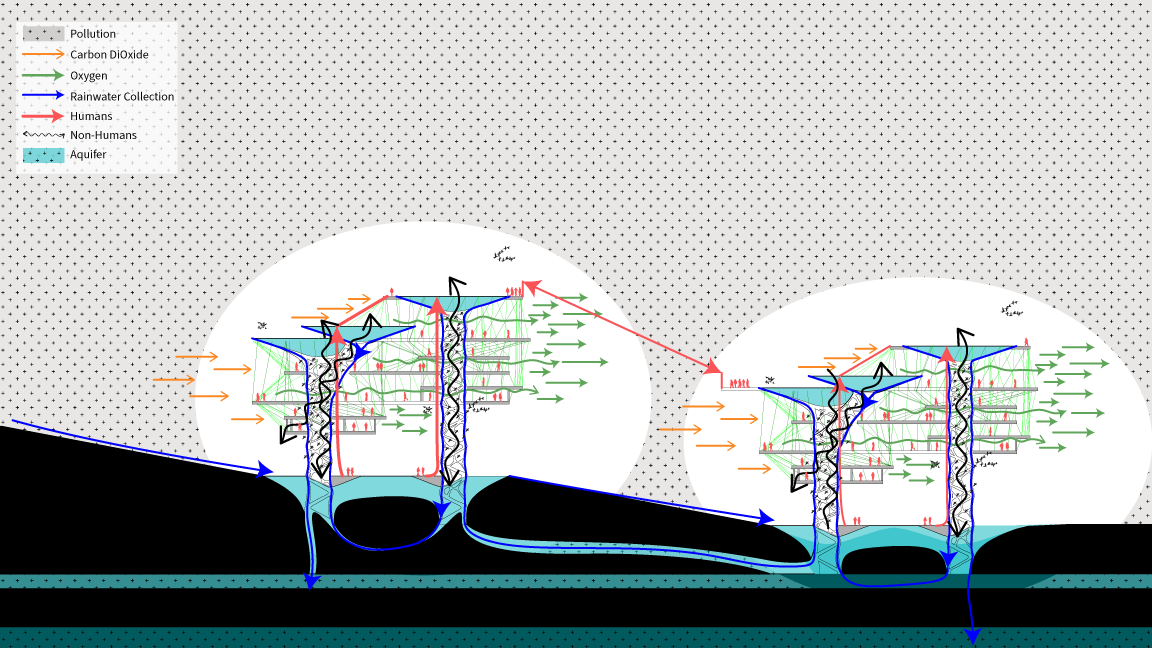
DIAGRAM: Synthesis Sectional Diagram
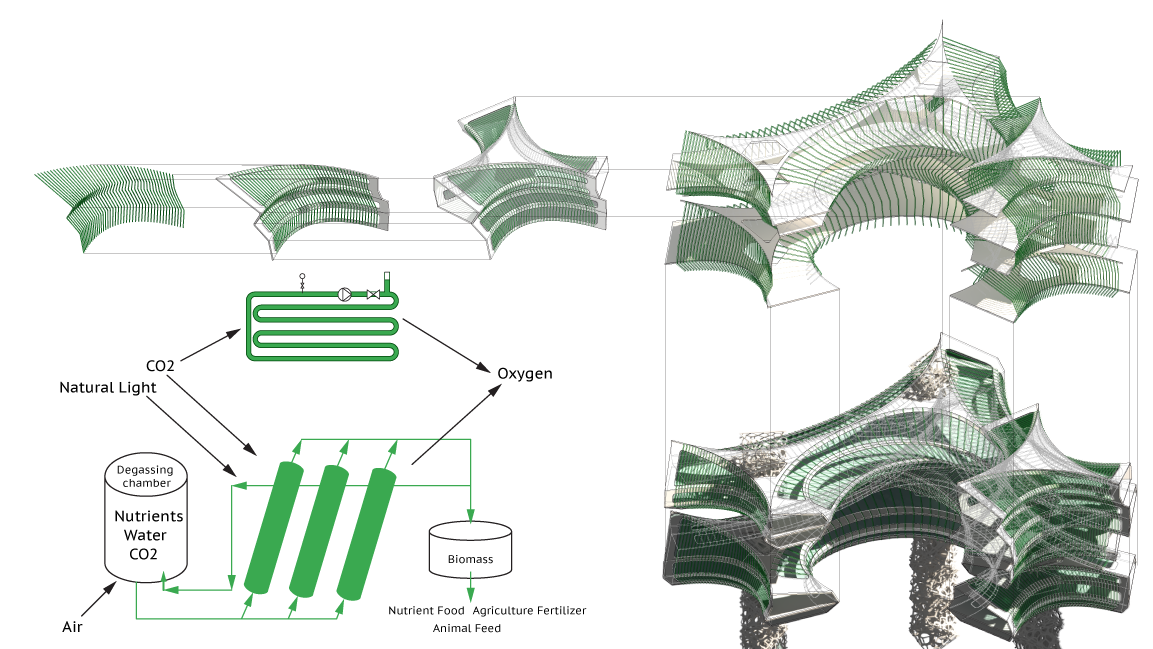
DIAGRAM: Air Purification System
